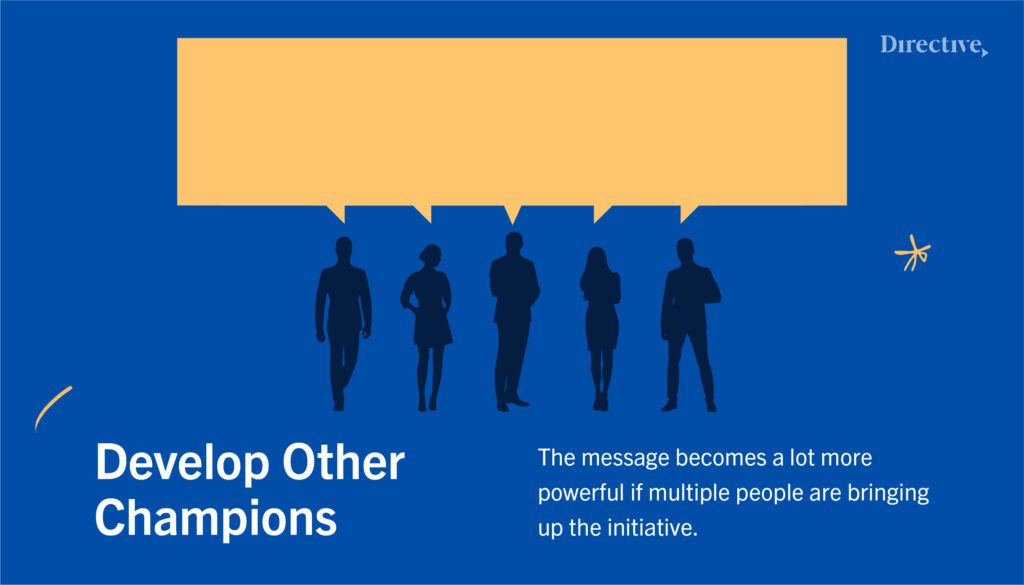Congratulations! Your marketing team did a great job in getting a client into the funnel, working them through each step. The salesperson built great rapport, showed value, and closed the account. Now marketing’s job is done and it’s time to move onto the next new account, right?
While many organizations operate this way, successful companies value “customer marketing” to increase retention and help with same store growth. Here we will go into why customer marketing is valuable and some ways to implement campaigns.
What is Customer Marketing?
Customer marketing differs from other forms of marketing in that it targets your current customer base instead of new business. While some tactics can remain the same, the approach and messaging will vary in pretty significant ways. Existing customers have already made the hard decision to sign with your business, your marketing strategy should now be all about retention and growth into different service lines.

Why is Customer Marketing so important?
Often neglected, customer marketing can actually have a tremendous impact on your business. It’s easy to focus on new logos coming into your company, but retaining and growing your current customers is more cost effective. Generally, it can cost 5x as much to acquire a new customer versus retaining an existing one. Also, you can usually see a much higher chance of selling to an existing customer instead of to a new one. These numbers can vary from a 50-70% chance to sell to a new customer, as opposed to 5-30% chance of selling to a new one.
So why do so many people neglect customer marketing? For some it can be hard to understand as a growth channel, and usually you can get bigger deals from selling into new clients. Customer marketing also requires a significant amount of consistency that can be hard to achieve if it’s not an organizational priority.
How to get Buy-in for Customer Marketing Initiatives?
Conducting effective customer marketing initiatives usually involves a decent investment in both money and time. This can be hard to sell internally, especially if you’re in a sales/new business focused environment. So what are some steps you can take to get buy-in across the organization?
Gather the Stats
Besides the numbers referenced above about the cost effectiveness of keeping clients and growing current ones, there’s a lot of information you can get within your organization that can help make your case. Most SaaS companies should be able to pull the following:
- Churn rate – how many clients is the company losing either monthly or annually? Since customer marketing can make a big impact on client retention this is an important one to speak to.
- Cost per acquisition – this tells you the current cost associated all in with getting a new account. By pulling cost per acquisition you can then calculate how much you could reduce this number by growing current customers. More profitable sales makes for a happier executive team.
- Lifetime Value – this shows the total revenue derived from the average company you work with. Customer marketing can extend the amount of time a client works and spends with you, which in turn should improve the overall lifetime value of accounts.
Make a Plan
Once you’ve put together all the relevant information, it’s time to make a plan for how to improve these numbers. Start with your end goal; decreasing churn and increasing same store growth. From there work backwards into what strategies might work to affect both of these numbers. The best approach will vary a lot by industry and company. Try to get as specific as possible by addressing who is using your service and why these approaches are the best way to impact their satisfaction with your brand.
Develop Other Champions
If you want to make change within an organization, it’s significantly easier to accomplish if you have multiple people bought in before discussing with a decision maker. If you know that you ultimately need signoff from the CEO to get your plan moving, start with finding others who might help back up what you’re saying.

This could be the head of marketing, sales lead, or even the service teams working on the account. The message becomes a lot more powerful if multiple people are bringing up the initiative.
Start Small, Show Wins
If you can’t get approval on a full blown campaign, start small. Pick one or two initiatives (maybe ones that don’t have an external investment) and show the impact they have had. If you can provide evidence that it’s worth it to pursue, you’ll have an easier time getting the larger budget you might want to implement.
Customer Marketing Tactics and Strategies
Now that you have buy-in it’s time to come up with customer marketing tactics and strategies to implement. Remember, the main goals are customer retention and same store growth. With that in mind here are some proven ways to approach customer marketing:
Provide an Exceptional Service or Product
This one is obvious, but it’s going to be hard to build an effective customer marketing strategy if people don’t like your product or service. If churn is already high, this might be tough to overcome through just marketing.
Consistent feedback loops will be important here. This can come from net promoter score (NPS) surveys, customer interviews, or even just check-ins with your points of contact. Use this information to find out what is most compelling about your product, as well as what might need work.
It’s also important from the beginning with new business to target your ideal customer profile, or ICP. If you can make sure you’re only targeting the right people upfront you can be sure there won’t be satisfaction issues on the back end.
Develop a Referral Program
Once you know you have happy customers that are bought into your brand, you can create a referral program. This could take the form of an incentive to send over new business, or to champion you internally to other business units in the organization. You get a large benefit from the social proof of someone saying, “I love this service, and you will too!” It should make your time to close shorter and cost overall lower.
The referral program could include gift cards, donations, or gifts that you provide if a referral closes. This can vary depending on the person, and some level of flexibility could be helpful. Something personalized will go much further than a generic isolated mug as a thank you, for example.
Incentivize Same Store Growth
The people who are going to have the most success growing accounts are going to be the ones closest to the clients. With that in mind, give your account managers incentives to grow their book of business. This will depend on your margins, but the more you incentivize the more likely they will prioritize. A $20 gift card will not net nearly as much growth as say a percentage of the upsell.
Training also becomes very important here. Make sure they know what trigger words or how other business lines could positively impact their clients. This also requires a decent amount of repetition, and constant celebration of managers who see the most growth of accounts. If an account manager is not seeing their accounts grow at all, it’s worth reviewing how they are approaching clients and if their satisfaction scores are as high as others.
Show your Appreciation
Continually showing your appreciation to your current customers goes a long way in improving retention and engendering brand loyalty. There are a number of ways to accomplish this:
- Utilize a gifting platform for big milestones or calendar events like Sendoso or Goody. These allow for personalized gifts that show appreciation for them as a person.
- Have executives reach out or send handwritten messages to show that the client isn’t just a number, but instead someone to show gratitude towards. This becomes less scalable the more clients you have, but also more impactful.
- Adding value outside of the current service can help build good will. You can even build in the margin for these extra services without letting the client know, making this both delightful and scalable.
- Conducting combined case studies can help your point of contact look good as well as show social proof for your company. This can also help in combined speaking engagements or industry awards.
Content & Email Marketing
Two tried and true methods of customer marketing are through content and email. Consistently developing new, value adding content targeting your ICP can help in showing value and remaining top of mind to current customers. If they feel like they are getting more value than just your service you know that you’ll have a better chance in both keeping them and growing them. Email marketing is a great way to continue to stay in front of your customers for very little cost. Through some automation you can easily disseminate your content as well as make sure they are aware of all the services you provide. Segmenting by customer type, size, and services used can help in really feeling customized to each account.
Continue to Target your Current Clients
If you know that your current clients are more likely to purchase your services, targeting them with ads can be a great way to remain top of mind. Since you already have first party data, utilizing programmatic or social media to show ads for services they are not currently using can help both to prime them for a conversation as well as make sure they are aware of other services you provide. There’s nothing worse than finding out your customer went with a different vendor because they didn’t know you could help them with their problem.
Tying it All Together
Customer marketing is an incredibly valuable tool to any organization to grow and optimize in a cost effective way. While we went into some strategies here, there are so many different ways to engage your current customer base. Finding the optimized strategy for your accounts will be crucial to continued success.
-
 CEO
Garrett Mehrguth
CEO
Garrett Mehrguth
Did you enjoy this article?
Share it with someone!

